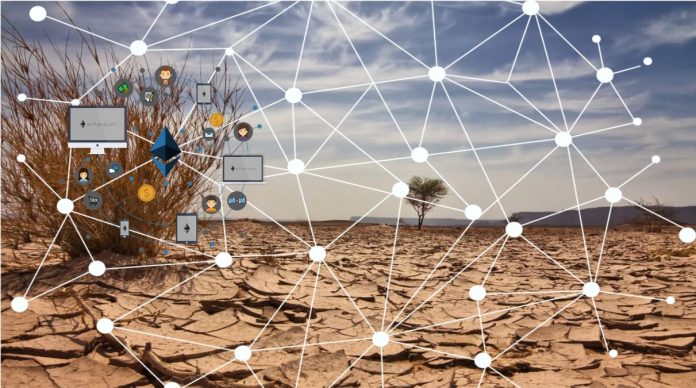It’s past time for the blockchain community to join forces with the climate change community to make some tangible and scalable investments in distributed ledger technology and climate action.
The United Nations Climate Change Conference in Glasgow, Scotland, in November 2021, known as COP26, asked the world to commit to reducing carbon emissions. In order to achieve a net-zero society in fewer than 30 years, many people are turning to blockchain technology, purchasing carbon offsets, and rekindling interest in carbon capture.
Transparency, renewable energy, carbon markets, and climate finance are all areas where blockchain technology might help expedite climate action, according to the United Nations Environment Programme (UNEP). The UN Climate Change Secretariat joined a multi-stakeholder group of organizations to form the Climate Chain Coalition, an open global project, at the 2017 Paris Summit, expressing its early support for blockchain for the climate.
UNEP, the International Association for the Advancement of Innovative Approaches to Global Challenges (IAAI GloCha), and the United Nations Economic and Social Commission for Western Asia gathered blockchain stakeholders in the MENA region for the Middle East and North Africa (MENA) Climate Week, which was followed by the Blockchain4Climate networking event, to shape a common understanding of the technology’s potential for supporting countries with climate action. I’ll describe how we can use blockchain to combat climate change as a result of these discussions.
Digital asset solutions that are environmentally friendly
Despite the fact that the digital asset industry has been chastised for its high energy usage, this claim is false. It’s critical to distinguish between cryptocurrencies and the energy-efficient blockchain technologies that underlie climate initiatives. Cryptocurrencies are used in a small number of climate initiatives. SavePlanetEarth is setting up certified Carbon Credit Smart nonfungible tokens (NFT) on Phantasma, a green blockchain for developers to build their decentralized applications. Algorand has declared its blockchain to be entirely carbon-neutral; Kickstarter is building a crowdfunding platform on the carbon-negative blockchain platform Celo; and SavePlanetEarth is setting up certified Carbon Credit Smart nonfungible tokens (NFT) on Phantasma, a green blockchain for developers The game has begun, and platforms are shifting to more environmentally friendly energies and consensus methods. Polkadot has also been touted as a blockchain that is good to the environment.

As people innovate for climate change, we’re seeing a maturation and proliferation of companies like TreeCoin, which sells tokenized assets attached to eucalyptus trees and reinvests them in eucalyptus trees in Paraguay. Carbonland Trust provides a tokenized carbon credit for forest protection, and the Cambridge Centre for Carbon Credits is looking to buy carbon credits to fund biodiversity-preserving nature-based solutions. ClimateCoin incentivizes carbon offsets by rewarding those who plant trees or reduce CO2 emissions with tokens. Carbon Offsets To Alleviate Poverty funds projects that reward farmers for planting and maintaining trees on underutilized land. Evercity is collaborating with GloCha on a green chain solution for COP28, the United Nations Conference on Climate Change’s 28th session, which will take place Nov. 6–17, 2023.
A number of projects are focusing on trading carbon credits as well. The Universal Protocol allows accredited projects to trade carbon credits for greenhouse gas reductions. NFT-based carbon credits, for starters, give carbon credit issuers access to the blockchain, allowing users to track, trade, and burn credits. Furthermore, organizations like Evercity and Blockchain Triangle are well-integrated platforms that lead and aggregate initiatives and carbon credits, connecting them to investors and financial mechanisms like digital green bonds via blockchain-based platforms. Initiatives like Blockchain for Climate and its Bitmo platform, as well as the Open Earth Foundation and its Nested Climate Accounting for the Paris Global Stocktake, are addressing the capacity to integrate these voluntary market credits in national reporting under the Paris Agreement.

Source: UNFFC
Smart grid management
Blockchain technology can assist decentralized energy markets develop and manage smart grids, as well as enable for reliable and transparent peer-to-peer power trade. Consumers can use Powerledger to purchase, trade, or swap extra renewable electricity with one another. Solstroem aims to help developing and emerging countries accelerate their energy transition by selling off-grid solar and geotagged, timestamped micro-carbon credits to individuals and businesses. Electron, based in the United Kingdom, is developing a smart grid that will distribute electricity reliably using smart contracts on the Ethereum blockchain. Grid Singularity is a platform for decentralized energy trading and data exchange. TransActive Grid is a blockchain-based energy marketplace that focuses on local peer-to-peer trade of home-produced energy.
Blockchain technology can assist decentralized energy markets develop and manage smart grids, as well as enable for reliable and transparent peer-to-peer power trade. Consumers can use Powerledger to purchase, trade, or swap extra renewable electricity with one another. Solstroem aims to help developing and emerging countries accelerate their energy transition by selling off-grid solar and geotagged, timestamped micro-carbon credits to individuals and businesses. Electron, based in the United Kingdom, is developing a smart grid that will distribute electricity reliably using smart contracts on the Ethereum blockchain. Grid Singularity is a platform for decentralized energy trading and data exchange. TransActive Grid is a blockchain-based energy marketplace that focuses on local peer-to-peer trade of home-produced energy.
Gamification and NFTs
NFTs are rapidly being used for climate change projects, ranging from awareness raising to fundraising; also, NFTs are used as an immutable record for impact and carbon credits. SavePlanetEarth is releasing Carbon Credit Smart NFTs that are certified. First Carbon Corp. is developing NFT-based carbon credits with blockchain access for issuers, allowing users to manage, trade, and burn credits without double counting.
Monitoring and reporting
In combination with artificial intelligence and the Internet of Things (IoT) with large-scale interconnected databases — e.g., climate, water, land — blockchain technology will be a critical tool for measurement and reporting to develop action for desertification and deforestation and predict weather events and trends. To connect positive (or negative) environmental changes or outcomes to financial incentives/disincentives, blockchain smart contracts provide a tamper-proof and zero-cost mechanism — for example, a measurable reduction in CO2 measured by an IoT-based network of atmosphere monitoring sensors placed around a village can “trigger” the release of crypto to the village based on the observed measurement in the environment.



















